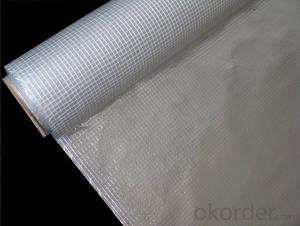Welcome to the world of EPS foam board insulation, a versatile, efficient, and cost-effective solution for your home or commercial building insulation needs. In this comprehensive guide, we’ll explore the ins and outs of EPS foam, its benefits, installation tips, and maintenance advice, all with a touch of personality and a dash of emotion to make the topic more relatable and engaging. So, let’s dive in!
What is EPS Foam Board Insulation?
EPS, or Expanded Polystyrene, is a lightweight, rigid foam material that’s widely used for insulation purposes. It’s made from polystyrene beads that are expanded with steam, creating a closed-cell structure that traps air and provides excellent thermal resistance. This makes EPS foam an ideal choice for insulation, as it can significantly reduce heat transfer and help maintain a comfortable indoor temperature.
The Benefits of EPS Foam Board Insulation
EPS foam board insulation offers a plethora of benefits that make it a popular choice among homeowners and builders. Here are some of the key advantages:
– Energy Efficiency: EPS foam’s high R-value (a measure of thermal resistance) means it can help you save on energy bills by reducing the need for heating and cooling.
– Moisture Resistance: Being a closed-cell structure, EPS foam is naturally resistant to moisture, preventing mold and mildew growth.
– Durability: EPS foam is incredibly durable and can last for decades without losing its insulating properties.
– Easy Installation: The lightweight nature of EPS foam makes it easy to handle and install, even in hard-to-reach areas.
– Cost-Effectiveness: Compared to other insulation materials, EPS foam is relatively inexpensive, offering great value for money.
When to Use EPS Foam Board Insulation
Knowing when to use EPS foam board insulation can be crucial for maximizing its benefits. Here are some scenarios where it’s particularly useful:
– New Construction: EPS foam is perfect for new builds, as it can be easily integrated into the construction process.
– Remodeling Projects: If you’re remodeling, EPS foam can be a great addition to improve energy efficiency and comfort.
– Cavity Wall Insulation: EPS foam boards can be used to fill the gaps in cavity walls, providing an extra layer of insulation.
– Roof Insulation: For both flat and pitched roofs, EPS foam can offer excellent thermal performance.
– Floor Insulation: Installing EPS foam under the floor can help keep your home warm in winter and cool in summer.
Installation Tips for EPS Foam Board Insulation
Proper installation is key to getting the most out of your EPS foam board insulation. Here are some tips to keep in mind:
– Surface Preparation: Ensure the surface is clean, dry, and free of any debris before installation.
– Proper Fit: Cut the EPS foam boards to fit snugly into the area, minimizing gaps and air leaks.
– Sealant Application: Use a high-quality sealant to seal any seams and joints, ensuring an airtight fit.
– Ventilation: If necessary, ensure proper ventilation is in place to prevent moisture buildup.
– Professional Help: For complex installations, don’t hesitate to consult with or hire a professional.
Maintenance and Care for EPS Foam Board Insulation
Taking care of your EPS foam insulation is relatively simple, but it’s still important to follow some basic maintenance guidelines:
– Regular Inspections: Check for any signs of damage or wear, and address issues promptly.
– Avoid Exposure to Open Flames: EPS foam is a petroleum-based product and should not be exposed to open flames.
– Protect from Physical Damage: Keep the insulation free from any sharp objects or impacts that could cause damage.
The Environmental Impact of EPS Foam Board Insulation
While EPS foam is an effective insulator, it’s also important to consider its environmental impact. EPS foam is made from petroleum, a non-renewable resource, and its production process has an environmental footprint. However, its energy-saving properties can offset some of these concerns by reducing the need for energy consumption over its lifetime. Additionally, there are recycled and bio-based alternatives available for those looking for more sustainable options.
Conclusion
EPS foam board insulation is a fantastic option for those looking to improve the energy efficiency, comfort, and durability of their homes or commercial buildings. With its numerous benefits, ease of installation, and cost-effectiveness, it’s no wonder that it’s become a popular choice in the world of insulation. By following the tips and guidelines provided in this guide, you can ensure that your EPS foam insulation serves you well for many years to come. So, go ahead and embrace the world of EPS foam with open arms, knowing that you’re making a smart and eco-friendly choice for your insulation needs.

